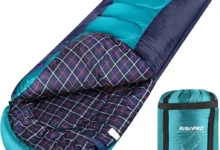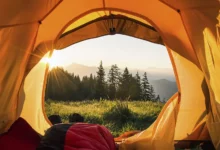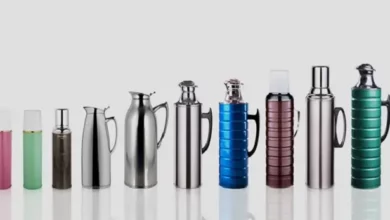Sleeping bag buying guide
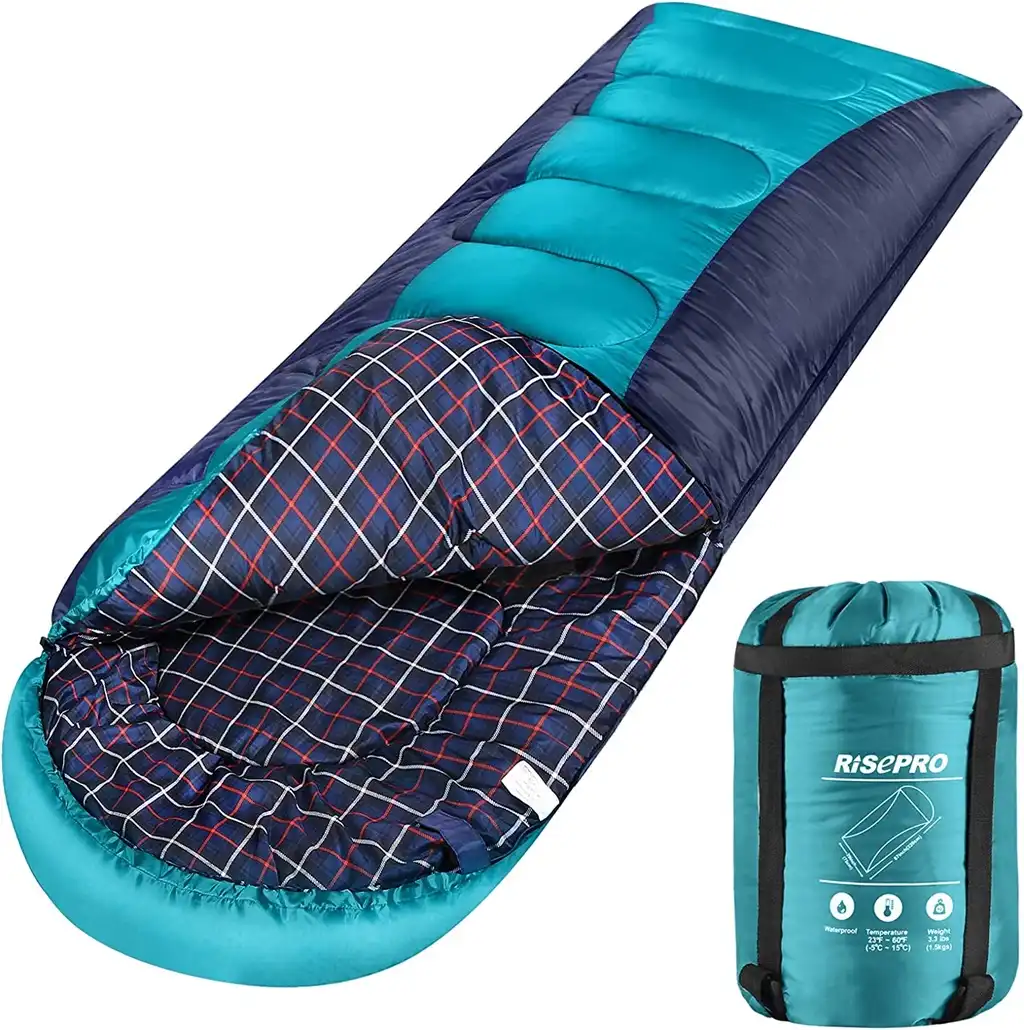
The sleeping bag is considered one of the most essential camping gear for overnight stays in nature, and it comes in various types according to the needs of nature enthusiasts.
Nature exploration and camping are healthy and enjoyable outdoor activities that have many enthusiasts worldwide. Camping involves overnight stays (usually more than one night) in a nature reserve, providing a way to escape the stress, depression, and anxiety of city life for a limited period of time.
The first and most important equipment for camping is the sleeping bag, as without it, you won’t have sufficient and comfortable sleep, resulting in a lack of the necessary strength and energy to continue your journey and enjoy it. Sleeping bags come in various types based on their appearance, insulation material, insulation thickness, shell material, weight, volume, warmth rating, and more.
What is a sleeping bag?
A sleeping bag is one of the essential camping items that you need for a comfortable sleep in nature. Essentially, a sleeping bag acts as insulation around your body to retain your body heat and provide you with a deep and restful sleep. Without it, continuing your journey would be challenging and exhausting. In addition to providing a sense of tranquility and security during sleep, a sleeping bag protects you from cold, moisture, insects, and animals.
Types of sleeping bags
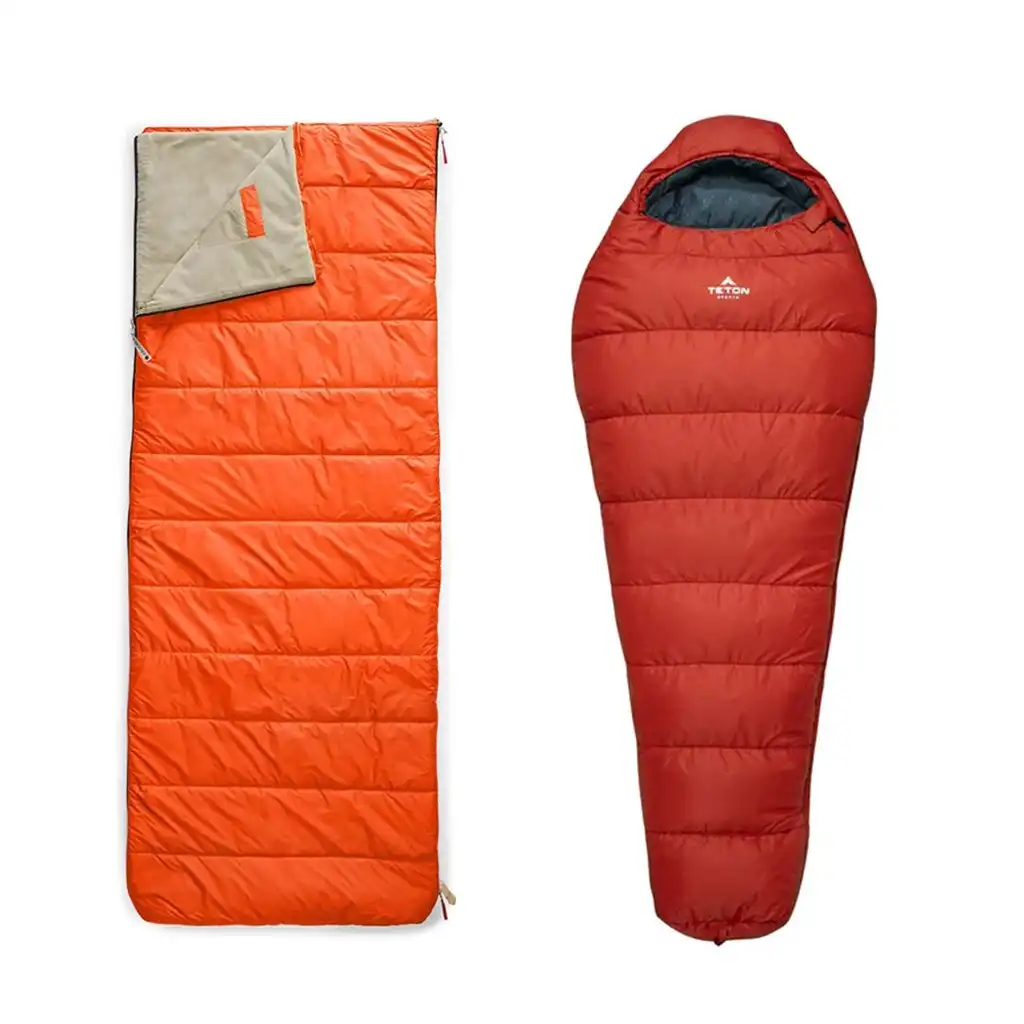
Types of sleeping bags by sex
Sleeping bags can be categorized based on insulation material:
1. Natural Fill (Down): Down is the lightest insulation material for sleeping bags. It has excellent compressibility, occupying less volume and making it easier to carry. Natural downfill generally has a longer lifespan compared to synthetic fibers, but it is usually more expensive. Down sleeping bags are not suitable for use in rainy or highly humid conditions because they lose their insulation properties when exposed to moisture. If they become wet, they not only increase in weight but also require significant time to dry. These types of sleeping bags are ideal for mountaineering and camping in dry and low-humidity areas.
2. Synthetic Fill: Various types of synthetic fibers are used in the production of sleeping bags, with the most common being polyester fill. These materials are typically layered to eliminate any air gaps, ensuring excellent insulation. Synthetic sleeping bags prevent significant water absorption and are considered the best choice for camping in humid climates. They occupy more volume and are heavier compared to natural fill sleeping bags. They have a shorter lifespan but are more affordable. Synthetic sleeping bags are suitable for regions with high humidity and moderate cold temperatures, as they dry relatively quickly.
3. Combination Fill: Combination fill sleeping bags are a blend of natural down and synthetic fibers, such as polyester. They offer a higher moisture-wicking capability compared to pure downfall, are heavier, and tend to be more budget-friendly.
These different types of sleeping bags provide campers with options that suit their specific needs and the environmental conditions they will encounter during their camping trips.
Types of sleeping bags based on the material of the cover
In terms of the material of the sleeping bag cover, two important features to consider are the waterproofness and breathability of the fabric. Sleeping bags have different covers depending on their intended use, with nylon and polyester being the most common durable materials.
Waterproof feature: Some rectangular sleeping bags have a cotton or tarpaulin cover that is completely waterproof. However, these sleeping bags are heavier and less suitable for backpacking, and they are more commonly used for car camping trips where equipment can be transported easily.
Breathability of the fabric: Some fabrics have high breathability, allowing sweat and moisture to transfer to the outer layer while preventing heat loss. Nylon fabrics can increase perspiration and result in body cooling, while covers made of cotton have high breathability, reducing perspiration and maintaining body heat.
Types of sleeping bags based on shape
Sleeping bags are produced in three main categories based on their cut and appearance: mummy, rectangular, and semi-rectangular, to cater to the needs and preferences of all mountaineers and outdoor enthusiasts.
Mummy sleeping bag: This type of sleeping bag is designed in the shape of the body in a sleeping position, with the shoulder area slightly wider and the foot area narrower. This design allows for less material to be used in the production of the sleeping bag, resulting in a smaller volume and lighter weight. There is no room for tossing and turning inside; therefore, some individuals may not find it as comfortable. Since the primary function of a sleeping bag is to retain body heat, the mummy sleeping bag, with its smaller interior space, provides the highest heat efficiency. It has a hood portion that helps keep the head and neck warm in cold temperatures.
Rectangular sleeping bag: This type of sleeping bag has a consistent width from top to bottom. It provides ample space for body movement, hands, and feet, and therefore offers greater comfort compared to the mummy sleeping bag. However, in terms of heat retention, it does not perform as well. This sleeping bag occupies more volume compared to the mummy sleeping bag.
Semi-rectangular sleeping bag: This type of sleeping bag falls between the rectangular and mummy styles. It offers more comfort than the mummy sleeping bag and provides more warmth than the rectangular sleeping bag. The semi-rectangular sleeping bag is larger and heavier than the mummy model.
Types of sleeping bags based on weight
Read this text and translate it into English: “Weight and volume are important criteria in purchasing a sleeping bag and should be chosen based on the route and type of travel. The total weight depends on various factors such as insulation material, insulation density, cover type, shape, and size of the sleeping bag. If you are traveling with a backpack and have long walks, hiking, and mountaineering ahead, the heavy weight of the sleeping bag will double the difficulty of your journey, and you should choose lighter sleeping bags. However, if you are traveling by car or motorcycle, the weight of the sleeping bag will not be a significant factor in your choice.”
Types of sleeping bags based on weather conditions
Sleeping bags are divided into three categories based on weather conditions: summer, three-season, and winter.
Summer sleeping bag: Suitable for temperatures around 1°C and higher. Due to the use of less insulation, it is lighter in weight compared to three-season and winter sleeping bags. It is also more compact and takes up less space.
Three-season sleeping bag: Suitable for temperatures around 9°C to 1°C. This type of sleeping bag is commonly used in spring, autumn, and summer nights in mountainous regions with cold temperatures. Good three-season sleeping bags are designed with special features such as attachable hoods, extra collars, and additional zipper covers to combat sudden cold and unexpected weather conditions.
Winter sleeping bag: Suitable for temperatures around 9°C and below. This sleeping bag incorporates all the features of a three-season sleeping bag (hood, extra collar, etc.) and utilizes more insulation materials. It has a higher weight and volume when packed compared to summer and three-season sleeping bags, occupying more space. When purchasing a winter sleeping bag, choose models with higher insulation density and smaller volume to avoid difficulties in carrying the bag during challenging treks and mountaineering.
Important Tips for Using Sleeping Bags
Here are some important tips for using a sleeping bag:
- Always use a sleeping pad or groundsheet, especially if you’re sleeping outside of a tent. This not only provides added comfort but also prevents direct contact between the sleeping bag and the ground, rocks, wood, etc.
- Wear sufficient and breathable clothing to prevent cold or excessive sweating from disturbing your sleep.
- Eat an adequate amount of food as your body’s energy and metabolism decrease during sleep, and body temperature decreases.
- Stay hydrated by drinking enough water, as it helps regulate body temperature.
- Enter the sleeping bag with dry clothes that are free from sweat and moisture.
- Use an inner liner to prevent the sleeping bag from getting dirty due to direct contact with your body or soiled clothes.
- Handle the zippers of the sleeping bag gently to prevent them from tearing or getting damaged.
- When zipping and unzipping, be mindful of sweat to avoid excessive moisture inside the sleeping bag.
- Avoid wearing waterproof and windproof clothing inside the sleeping bag, as it can cause sweating and lack of breathability.
- If your campsite is stationary, air out your sleeping bag daily by exposing it to fresh air.
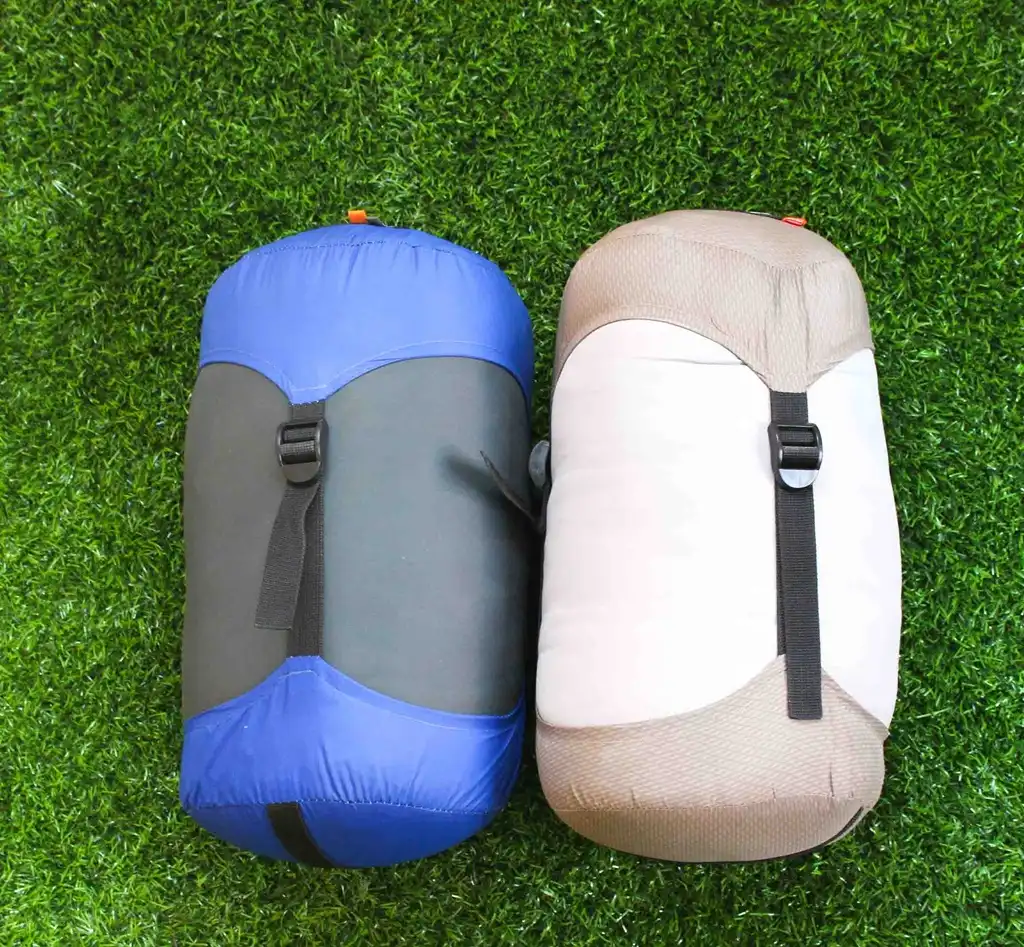
Important Points in Keeping a Sleeping Bag
To properly maintain your sleeping bag, follow the following guidelines:
- When using the sleeping bag, try to keep it clean and dry.
- After each use, place the sleeping bag in an open and sunny area to allow it to completely dry out from any moisture.
- If the sleeping bag gets wet, avoid compressing it as it can damage the insulation, especially in natural down sleeping bags.
- Store the sleeping bag in an uncompressed state until the next use. You can hang it or place it in a storage sack (a large mesh or cloth bag) to protect the fibers.
- Clean dirty spots on the sleeping bag locally using clean hands and without using any cleaning agents. If necessary, use the smallest amount of mild detergent and gently spot clean with a soft toothbrush. Then, wipe it with a damp sponge and allow it to air dry or dry it gently in mild sunlight.
Important Points in Washing Sleeping Bag
To wash a sleeping bag, follow these guidelines:
1. Only follow the instructions provided on the sleeping bag.
2. For hand washing, use a mild, enzyme-free detergent, and for down-filled sleeping bags, use a specialized down cleaner.
3. Never use fabric softener or bleach.
4. Fill a bathtub or a large container with water and dissolve the detergent in it. Place the sleeping bag inside and let it soak for a while.
5. Gently press the sleeping bag with your hands to remove dirt and stains.
6. Rinse the sleeping bag multiple times to ensure all the detergent is completely removed.
7. After rinsing, try to squeeze out the water from the sleeping bag. You can also use a dryer on a low heat setting.
8. For machine washing the sleeping bag, follow the instructions provided on the sleeping bag. Set the washing machine temperature according to the guidelines.
9. Partially unzip the sleeping bag and place it inside the washing machine.
10. Repeat the rinsing process after washing to ensure all the detergent is thoroughly removed.
11. When drying the sleeping bag, especially if it has natural down insulation, place a few tennis balls inside the dryer to prevent clumping and expedite the drying process.
12. In both hand washing and machine washing scenarios, hang the sleeping bag on a clothesline in a well-ventilated area away from direct sunlight to dry.
Why do you need a sleeping bag?
Sleeping in the midst of nature is one of the most enjoyable experiences of travel. However, cold weather, moisture, or unfavorable temperatures can disrupt the pleasure of a peaceful sleep. Whether you are a professional mountaineer, an amateur nature enthusiast, or a backpacker, you need to ensure suitable temperature conditions for your sleep. The best tool to achieve this is having a standard sleeping bag, which is considered one of the essential camping equipment.
A sleeping bag acts as insulation between the ground and your body to retain body heat. When the ambient temperature is favorable, you can immerse yourself in a deep and restful sleep, allowing you to continue your journey with sufficient energy and vitality. Insufficient sleep, on the other hand, will make the rest of your trip difficult and exhausting. In addition to protecting you from the cold and moisture, a sleeping bag also safeguards you against insects and animals.
Points to consider when buying a sleeping bag:
1. Type of sleeping bag: Choose from summer, three-season, or winter sleeping bags based on the season and weather conditions of your destination.
2. Temperature rating: Pay attention to the temperature range of the sleeping bag, including the upper limit, lower limit, and comfort temperature.
3. Insulation material: Depending on your intended use, select either natural fill (such as down) or synthetic fibers as the insulation material.
4. Sleeping bag shape: Choose from mummy (which provides more warmth but less room), rectangular (which offers more comfort but less warmth), or semi-rectangular (which provides medium comfort and warmth).
5. Weight and packability: The weight and size of the sleeping bag depend on the insulation material and physical design. Opt for a lighter sleeping bag for long hikes.
6. Sleeping bag sizes: Sleeping bags are available in small, medium, and large sizes, as well as single and double models.
7. Zipper placement: The zipper of the sleeping bag is on the left side for left-handed individuals and on the right side for right-handed individuals.
8. Dual-zip sleeping bags are suitable for summer use as they allow for ventilation at the feet and prevent excessive sweating.
9. Bright colors are not ideal for sleeping bags as they show dirt and stains more prominently.
10. Some sleeping bags have additional features such as convertibility to a jacket, mosquito netting, or a built-in flashlight.
11. If you are an outdoor enthusiast and use sleeping bags for camping, feel free to share your experiences in the comments section of the article with us and other users.

